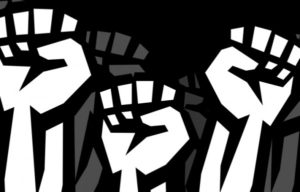
Police Misconduct
Police Misconduct is a serious problem affecting our national security. Despite the existence of numerous state and federal laws, we are confronted with the specter of Police Misconduct on an almost daily basis in the United States. Whether it is excessive use of force, unlawful arrest, unlawful seizures, or racial profiling, we will fight to protect your civil rights and hold Police Officers, Departments, and even their local governments accountable for abuses of power.
§ 1983 and Police Misconduct
42 U.S.C. § 1983 penalizes any person who acts under color of law, to deprive a U.S. citizen of any of their rights, privileges, or immunities secured by the Constitution and laws. § 1983 was passed to protect African-Americans from the Ku Klux Klan, and State discrimination during Reconstruction. Today, this law is used to seek justice against abusive Police Officers.
If you have been a victim of an unreasonable search and seizure, which includes the use of excessive force, you have a right to compensation for your injuries.
Police Misconduct and Monell Liability
A Monell Claim is a § 1983 claim against a governmental or municipal entity, such as a city, town, village, police department, etc. Local government entities may be sued for deprivation of a right under § 1983, provided they are not acting as an arm of the state.
There are Four primary theories of governmental liability used under §1983:
- An officially adopted or promulgated policy which deprives citizens of a right;
- A custom or practice that is not officially adopted or promulgated, but is so pervasive and long-standing that it operates as a de facto policy which deprives citizens of clearly established rights;
- A failure to train, supervise, discipline, screen, etc., which deprives citizens of clearly established rights; and
- A particular decision or act made by someone who is a final decision-maker, that culminates in a deprivation of clearly established rights.
§ 1983 Claims, and Governmental Liability cases are very difficult to establish and litigate. These cases almost always contain issues of Governmental Immunity, and require experts, and extensive litigation to resolve lawsuits.
Police Misconduct Actionable Under § 1983
Police Brutality
Police Brutality is a form of Police Misconduct which encompasses several different acts; an outright assault on a person without any justification, an excessive use of force during an otherwise legal encounter, falsifying or planting evidence, illegal searches and seizures, and many other acts. Each of these violations can significantly harm citizens in police encounters by resulting in an improper arrest, the filing of inappropriate charges (overcharging), and serious physical harm including death.
Excessive Use of Force
The Excessive Use of Force is unconstitutional in every state in America. The legal standard for determining whether the force used in making an arrest, detention, or seizure of a person, is an objective standard of reasonableness. This means that legally, what the officer personally believed was appropriate (subjective) the deciding factor; what ultimately matters is what a reasonable person in the officer's shoes would have done (objective).
In order to determine if a use of force was objectively reasonable, the court must balance an individual's Fourth Amendment interests' against the the government's interest. The type of governmental interests considered by a court are the unique factual circumstances that gave rise to the use of force, such as: the severity of the crime suspected, whether the suspect posed an immediate threat to the police officer or bystanders, and whether the suspect is actively resisting arrest or attempting to flee from police custody.
It is important to understand that courts do not judge the reasonableness of a use of force with the benefit of hindsight. A judge will essentially consider what a reasonable police officer at the scene, with the same information as the police officer involved in the use of force controversy, would have conducted themselves. Nevertheless, the use of force on someone who is incapacitated, compliant, or otherwise poses no threat is excessive and violates the constitutional rights of the victim.
False Arrest
All arrests must be founded on probable cause. An arrest lacking probable cause is a violation of the Fourth Amendment, and a victim can recover compensation under § 1983. In order to prevail on a False Arrest claim under § 1983, a plaintiff must prove by a preponderance of the evidence that the police lacked probable cause to arrest them.
Police have probable cause to arrest whenever there are facts and circumstances shown that the suspect has committed, is committing, or is about to commit a crime. Probable cause does not require any proof of a crime having been committed, but only that there is a sufficient probability that one has, is, or will be committed. Just like with the use of force, probable cause and probability of criminal activity is assessed under an objective reasonableness standard based upon all of the facts and circumstances known by the police officer at the time of an arrest. Courts do not analyze probable cause from hindsight, but rather what a reasonable police officer at the scene, armed with the same facts as the officer involved would have done.
If you have been a victim of Police Brutality, or some other form of Police Misconduct, it is imperative that you contact an experienced and effective Civil Rights Attorney.
Racial Discrimination
Racial Discrimination remains one of the most invidious issues affecting People of Color in America. Despite the passage of the Fourteenth Amendment, The Civil Rights Act of 1964, and numerous congressional statutes; Racial Discrimination still occurs at an alarming rate.
Employment Discrimination
Title VII of the Civil Rights Act prohibits discrimination by covered employers on the basis of race, color, religion, sex or national origin.
There are 2 mechanisms to establish a claim of Employment Discrimination based on race: Disparate Treatment, and Disparate Impact.
Disparate Treatment
Disparate Treatment occurs when an employer treats some people less favorably than others because of their race, color, sex, religion or national origin.
To bring a claim of Disparate Treatment, an employee must demonstrate:
- That they belong to a protected class (race, ethnicity, national origin, etc.)
- That they applied, and were qualified for a position for which the employer was seeking applicants
- That despite their qualifications, they were rejected, and
- That after their rejection the position remained opened, and the employer continued to seek applicants from persons of the employee's qualifications.
Disparate Impact
Disparate Impact is a theory of discrimination where employment practices are facially neutral in their treatment of different groups, but in fact burden one group more than another, and cannot be justified by a business necessity.
Disparate Impact theories of Racial Discrimination are harder to establish than Disparate Treatment claims. Most of the time you will need experts and statistics to provide evidence to support the claim. However, unlike in a Disparate Treatment claim of discrimination, proof of a discriminatory motive is not required.
Sexual Harassment
The #MeToo Social Media campaign has been a watershed moment in American History, which has led to an increased understanding of, and vigilance to thwart sexual misconduct in America. Sexual harassment is a form of Sex Discrimination involving bullying or coercion of a sexual nature, unwelcome or inappropriate comments, and promises of rewards in exchange for sexual favors.
There are two primary theories of Sexual Harassment: Quid Pro Quo, and Hostile Work Environment.
Quid Pro Quo
Quid Pro Quo, latin for "This for That," is a form of Sexual Harassment in which a reward is conditioned upon a romantic or sexual favor. A Quid Pro Quo Sexual Harassment claim requires either an actual adverse employment action, or submission to the sexual harassment.
Hostile Work Environment
A Hostile Work Environment theory of Sexual Harassment is based on a work environment saturated by sexually or racially insensitive comments, actions or activities. To be actionable harassment must be sufficiently severe or pervasive to alter the conditions of employment and create an abusive work environment.
Filing a Sexual Harassment Claim
In order to file a Sexual Harassment claim, you must demonstrate that:
- You were subjected to unwelcome harassment
- The harassment was based on your sex
- The harassment was sufficiently severe or pervasive to alter the terms and conditions of employment and create an abusive working environment, AND The harassment was objectively offensive from the standpoint of a reasonable person in your position considering the totality of the circumstances and the harassment was subjectively offensive to the you, and
Your employer is responsible for such environment under either a theory of vicarious or of direct liability
Age Discrimination
Age Discrimination occurs when an employer fails to hire, fires, or fails to promote someone on the basis of their age. It is based on stereotypes that older workers are not as productive as younger workers.
The Age Discrimination in Employment Act (ADEA) provides that:
It shall be unlawful for an employer
(1) to fail or refuse to hire or to discharge any individual or otherwise discriminate against any individual with respect to his compensation, terms, conditions, or privileges of employment, because of such individual's age;
(2) to limit, segregate, or classify his employees in any way which would deprive or tend to deprive any individual of employment opportunities or otherwise adversely affect his status as an employee, because of such individual's age.
The statute protects employees over the age of 40. The legal framework for establishing an Age Discrimination claim is similar to that of establishing a Racial Discrimination claim.
LGBTQ Rights
LGBTQ Americans continue to face significant issues with Discrimination in Ohio. Despite finally receiving marriage rights in Obgergefell, discrimination in adoptions, employment and housing are still pervasive problems for far too many LGBTQ Ohioans.
While there is still no statewide law to protect against discrimination based on sexual orientation and gender identity outside of state employment. Discrimination based on sexual orientation, but not gender identity, is prohibited within state employment.
Also, thirty Ohio cities and counties have anti-discrimination ordinances prohibiting employment and housing discrimination of the basis of sexual orientation. These cities and counties include:
Athens, Bowling Green, Canton, Cincinnati, Cleveland, Columbus, Coshocton, Dayton, East Cleveland, Newark, Oxford, Toledo, and the Village of Yellow Springs.
Also, 14 municipalities and counties prohibit public employment discrimination based on sexual orientation and/or gender identity: Akron, Cleveland Heights, Cuyahoga County, Franklin County, Gahanna, Hamilton, Hamilton County, Laura, Lima, Lucas County, Montgomery County, Oberlin, Summit County, and Wood County.
Akron, Athens, Bowling Green, Cincinnati, Cleveland, Columbus, Dayton, East Cleveland, Oxford, Toledo, and Yellow Springs have ordinances providing full protections from discrimination in employment and housing based on gender identity and sexual orientation.
Other localities offer some, but not full protections (e.g., Lakewood, North Olmsted, and Shaker Heights provide nondiscrimination laws that include housing, but not employment).
